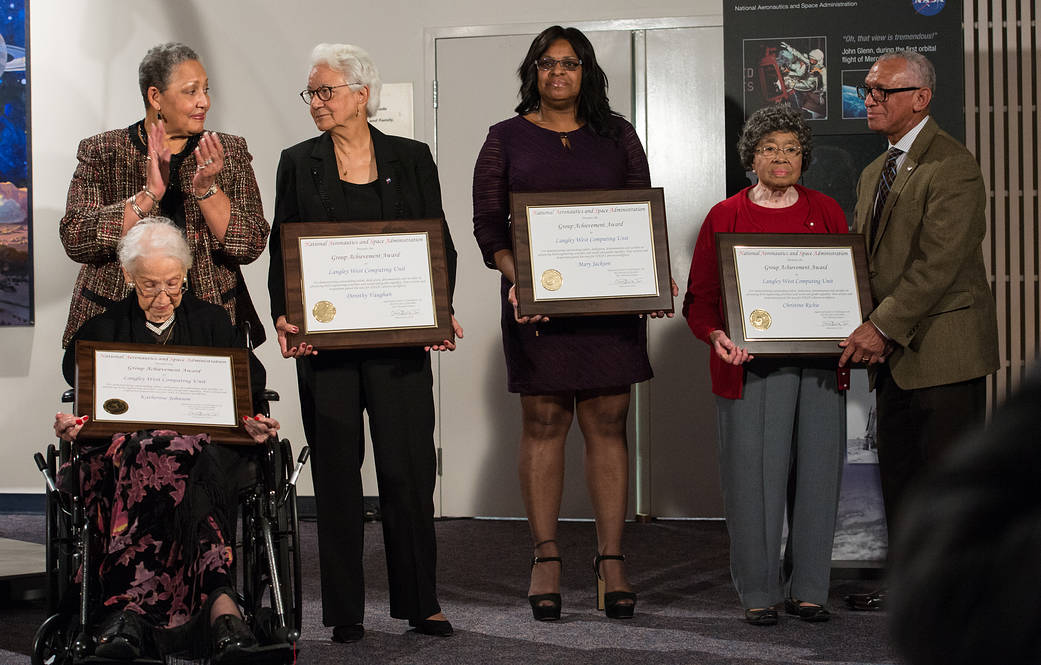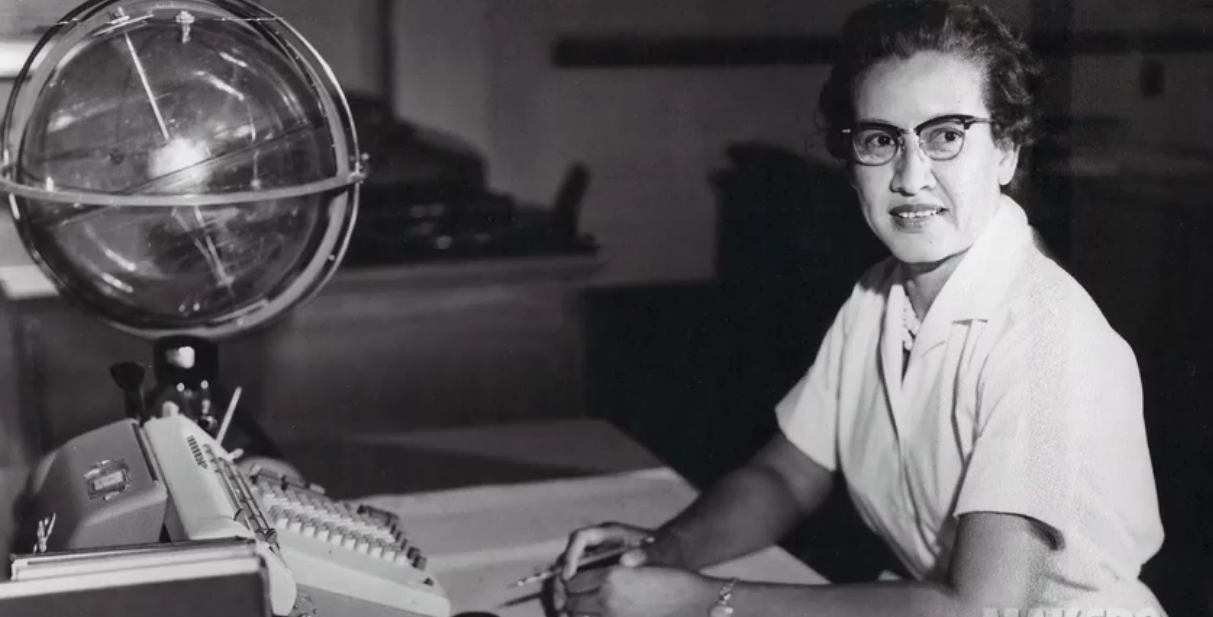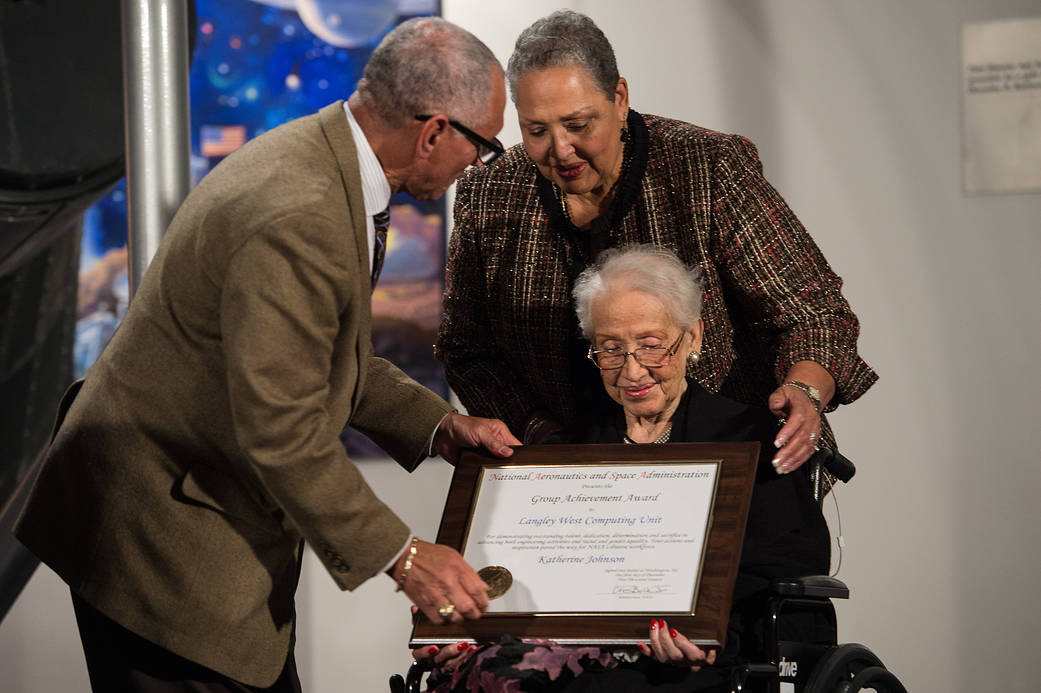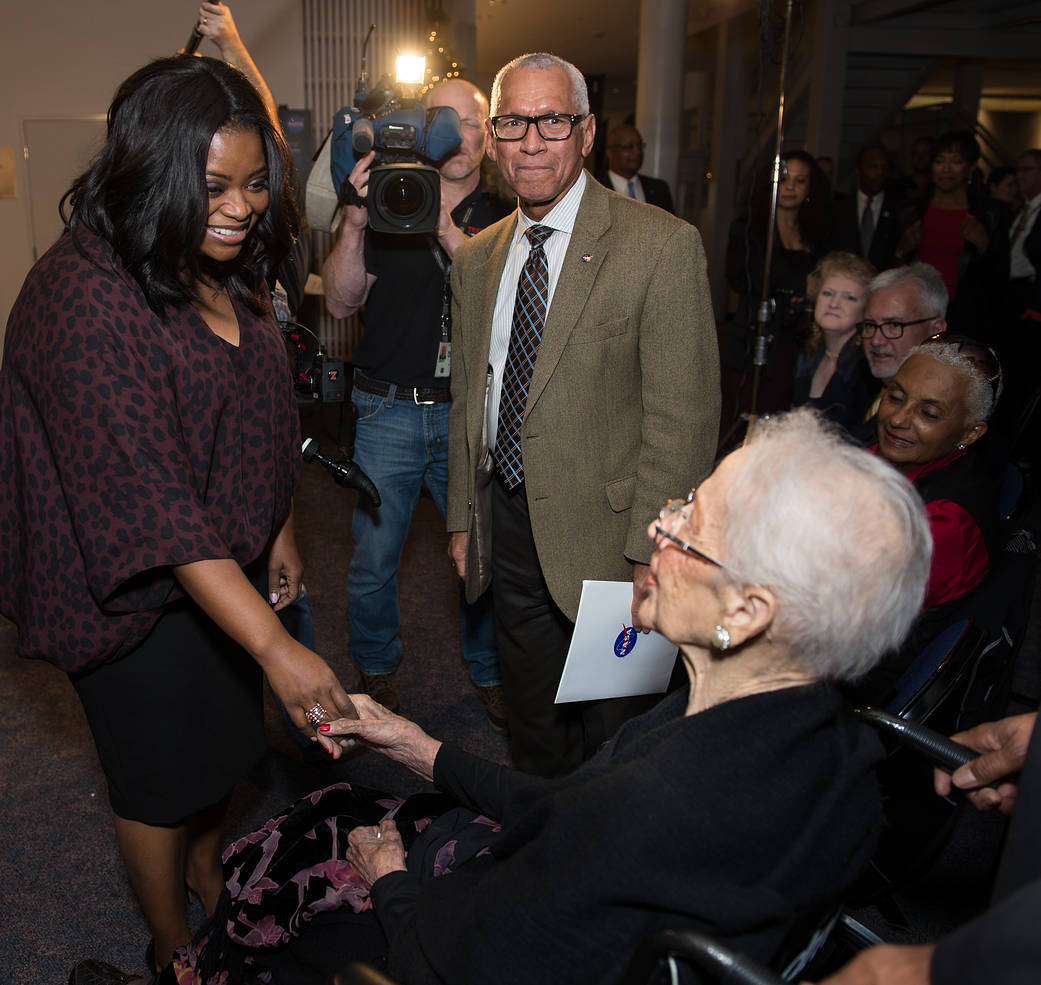
NASA Administrator Charles Bolden, right, poses for a photo with awardees of the Langley West Computing Unit Group Achievement Award at a reception to honor NASA’s “human computers” on Thursday, Dec. 1, 2016, at the Virginia Air and Space Center in Hampton, VA. Afterward, the guests attended a premiere of “Hidden Figures,” a film which stars Taraji P. Henson as Katherine Johnson, the African American mathematician, physicist, and space scientist, who calculated flight trajectories for John Glenn’s first orbital flight in 1962. Also featured are Octavia Spencer as Dorothy Vaughan and Janelle Monae as Mary Jackson, Johnson’s colleagues in the segregated West Area Computers division of Langley Research Center.

NASA research mathematician Katherine Johnson is photographed at her desk at NASA Langley Research Center with a globe, or “Celestial Training Device.” Image Vredit: NASA
Born on Aug. 26, 1918, in White Sulphur Springs, West Virginia, Johnson began her career in 1953 at the National Advisory Committee for Aeronautics (NACA), the agency that preceded NASA, one of a number of African-American women hired to work as “computers” in what was then their Guidance and Navigation Department. Johnson worked at Langley from 1953 until her retirement in 1986, making critical technical contributions which included calculating the trajectory of the 1961 flight of Alan Shepard, the first American in space. She is also credited with verifying the calculations made by early electronic computers of John Glenn’s 1962 launch to orbit and the 1969 Apollo 11 trajectory to the moon. Johnson worked on the Space Shuttle Program and the Earth Resources Satellite and encouraged students to pursue careers in science and technology.
Katherine Johnson was awarded the Presidential Medal of Freedom, the nation’s highest civilian honor, by President Barack Obama on Nov. 24, 2015. On May 5, 2016, she returned to NASA Langley, on the 55th anniversary of Shepard’s historic flight, to attend a ceremony where a $30 million, 40,000-square-foot Computational Research Facility was named in her honor. As part of the event, Johnson also received a Silver Snoopy award from Leland Melvin, an astronaut and former NASA associate administrator for education. Often called the astronaut’s award, the Silver Snoopy goes to people who have made outstanding contributions to flight safety and mission success.

NASA Administrator Charles Bolden presents an award to Katherine Johnson, the African American mathematician, physicist, and space scientist, who calculated flight trajectories for John Glenn’s first orbital flight in 1962, at a reception to honor members of the segregated West Area Computers division of Langley Research Center on Thursday, Dec. 1, 2016, at the Virginia Air and Space Center in Hampton, VA. Afterward, the guests attended a premiere of “Hidden Figures” a film which stars Taraji P. Henson as Katherine Johnson, Octavia Spencer as Dorothy Vaughan, and Janelle Monae as Mary Jackson. Image Credit: NASA

Actress Octavia Spencer, left, who plays Dorothy Vaughan in the film “Hidden Figures” and NASA Administrator Charles Bolden, right, greets NASA “human computer” Katherine Johnson, at a reception to honor NASA’s “human computers” on Thursday, Dec. 1, 2016, at the Virginia Air and Space Center in Hampton, VA. Afterward, the guests attended a premiere of “Hidden Figures,” a film which stars Taraji P. Henson as Katherine Johnson, the African American mathematician, physicist, and space scientist, who calculated flight trajectories for John Glenn’s first orbital flight in 1962. Photo Credit: NASA/Aubrey Gemignani
Filed Under: Aerospace + defense




